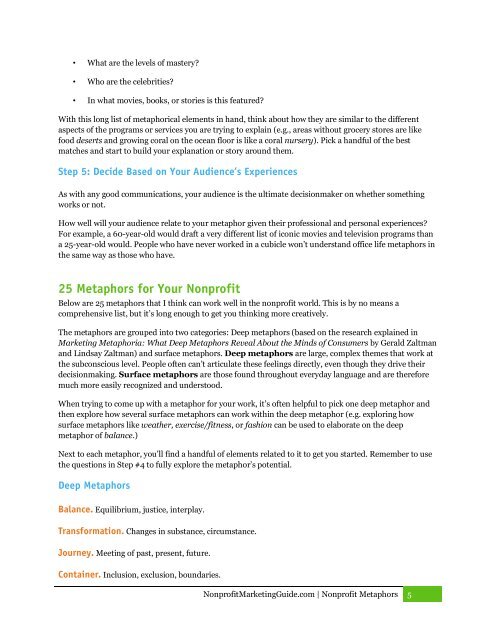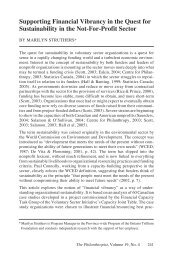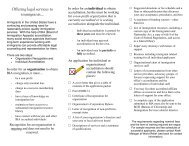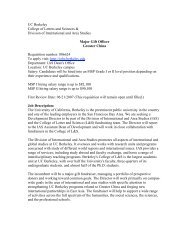Create successful ePaper yourself
Turn your PDF publications into a flip-book with our unique Google optimized e-Paper software.
• What are the levels of mastery?<br />
• Who are the celebrities?<br />
• In what movies, books, or stories is this featured?<br />
With this long list of metaphorical elements in hand, think about how they are similar to the different<br />
aspects of the programs or services you are trying to explain (e.g., areas without grocery stores are like<br />
food deserts and growing coral on the ocean floor is like a coral nursery). Pick a handful of the best<br />
matches and start to build your explanation or story around them.<br />
Step 5: Decide Based on Your Audience’s Experiences<br />
As with any good communications, your audience is the ultimate decisionmaker on whether something<br />
works or not.<br />
How well will your audience relate to your metaphor given their professional and personal experiences?<br />
For example, a 60-year-old would draft a very different list of iconic movies and television programs than<br />
a <strong>25</strong>-year-old would. People who have never worked in a cubicle won’t understand office life metaphors in<br />
the same way as those who have.<br />
<strong>25</strong> <strong>Metaphors</strong> for Your Nonprofit<br />
Below are <strong>25</strong> metaphors that I think can work well in the nonprofit world. This is by no means a<br />
comprehensive list, but it’s long enough to get you thinking more creatively.<br />
The metaphors are grouped into two categories: Deep metaphors (based on the research explained in<br />
Marketing Metaphoria: What Deep <strong>Metaphors</strong> Reveal About the Minds of Consumers by Gerald Zaltman<br />
and Lindsay Zaltman) and surface metaphors. Deep metaphors are large, complex themes that work at<br />
the subconscious level. People often can’t articulate these feelings directly, even though they drive their<br />
decisionmaking. Surface metaphors are those found throughout everyday language and are therefore<br />
much more easily recognized and understood.<br />
When trying to come up with a metaphor for your work, it’s often helpful to pick one deep metaphor and<br />
then explore how several surface metaphors can work within the deep metaphor (e.g. exploring how<br />
surface metaphors like weather, exercise/fitness, or fashion can be used to elaborate on the deep<br />
metaphor of balance.)<br />
Next to each metaphor, you’ll find a handful of elements related to it to get you started. Remember to use<br />
the questions in Step #4 to fully explore the metaphor’s potential.<br />
Deep <strong>Metaphors</strong><br />
Balance. Equilibrium, justice, interplay.<br />
Transformation. Changes in substance, circumstance.<br />
Journey. Meeting of past, present, future.<br />
Container. Inclusion, exclusion, boundaries.<br />
NonprofitMarketingGuide.com | Nonprofit <strong>Metaphors</strong> 5













